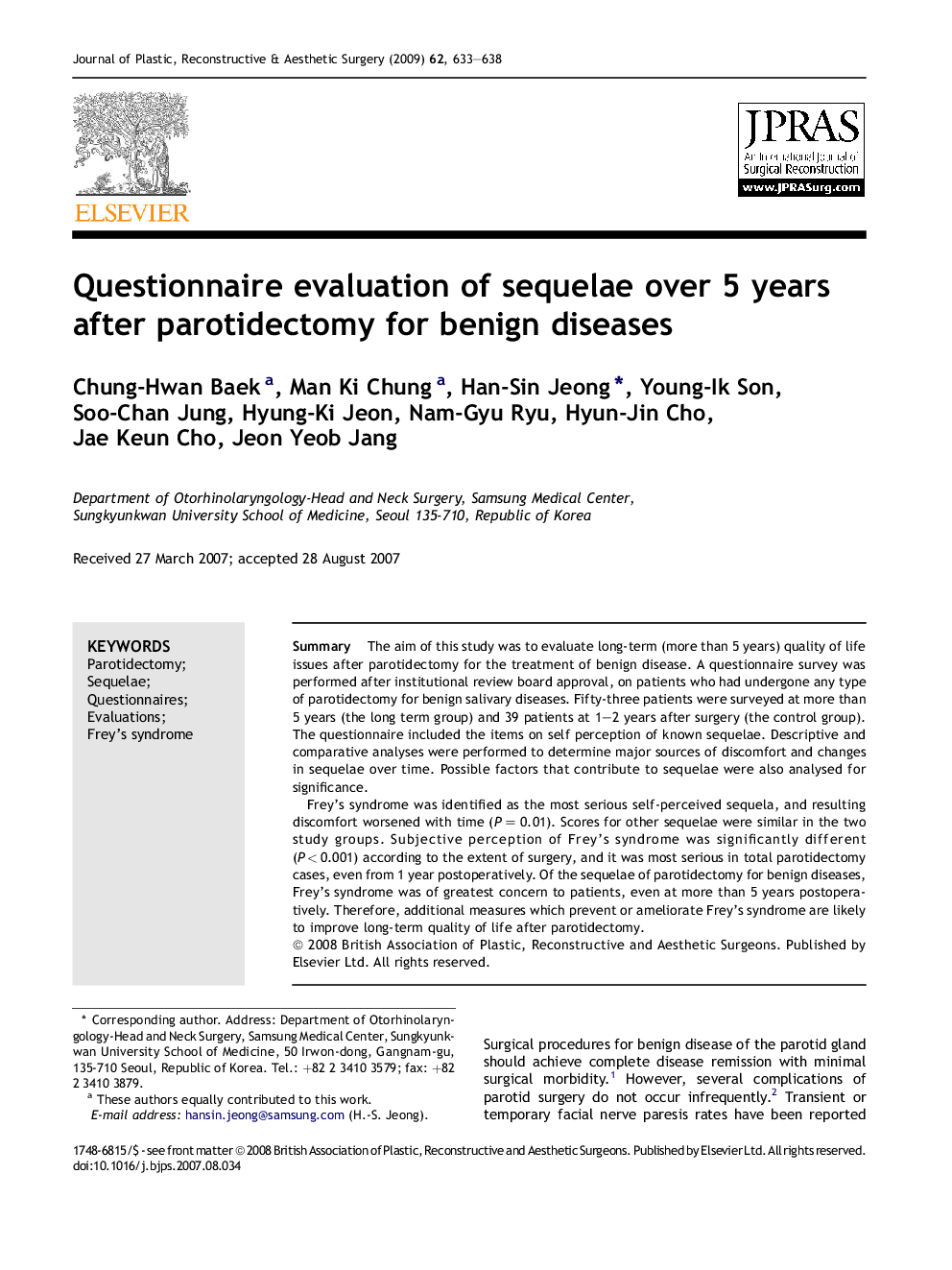| Article ID | Journal | Published Year | Pages | File Type |
|---|---|---|---|---|
| 4120600 | Journal of Plastic, Reconstructive & Aesthetic Surgery | 2009 | 6 Pages |
SummaryThe aim of this study was to evaluate long-term (more than 5 years) quality of life issues after parotidectomy for the treatment of benign disease. A questionnaire survey was performed after institutional review board approval, on patients who had undergone any type of parotidectomy for benign salivary diseases. Fifty-three patients were surveyed at more than 5 years (the long term group) and 39 patients at 1–2 years after surgery (the control group). The questionnaire included the items on self perception of known sequelae. Descriptive and comparative analyses were performed to determine major sources of discomfort and changes in sequelae over time. Possible factors that contribute to sequelae were also analysed for significance.Frey's syndrome was identified as the most serious self-perceived sequela, and resulting discomfort worsened with time (P = 0.01). Scores for other sequelae were similar in the two study groups. Subjective perception of Frey's syndrome was significantly different (P < 0.001) according to the extent of surgery, and it was most serious in total parotidectomy cases, even from 1 year postoperatively. Of the sequelae of parotidectomy for benign diseases, Frey's syndrome was of greatest concern to patients, even at more than 5 years postoperatively. Therefore, additional measures which prevent or ameliorate Frey's syndrome are likely to improve long-term quality of life after parotidectomy.
